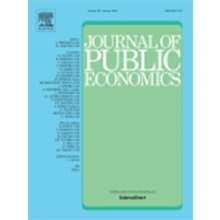본문
The labor market effects of Mexican repatriations: Longitudinal evidence from the 1930s

By prof. Jongkwan Lee,
Department of Economics
Research Profile
kwanlee@ewha.ac.kr
At several points in U.S. history, especially when workers experienced economic hardship, politicians have proposed the idea that halting immigration could alleviate their problems. As the Great Depression was forcing many Americans into unemployment, this idea was pushed one step further. Between 1929 and 1936, a significant group of Mexicans and their children (many of whom American Citizens) were subject to a range of measures, from encouragement to facilitation, pressure and outright forceful repatriation to their country of origin. The explicit goal of the efforts by national and local authorities was to reduce the local economic burden brought by Mexicans and create jobs for the natives by removing Mexicans who were "taking away" employment opportunities. This justification was very clearly stated by the politicians of the time as exemplified in the two quotes from Congressman Martin Dies and Commissioner Harry Hull.
"The large alien population is the basic cause of unemployment."
— Martin Dies, House of Representatives Member, 1930
"It is the purpose of the Department of Labor...to foster, promote, and develop the welfare
of the wage earners of the United States, ... and to advance their opportunities for profitable
employment; and it is a mere corollary of this duty and purpose to spare no reasonable effort to remove the menace of unfair competition which actually exists in the vast number of
aliens."
— Harry E. Hull, Commissioner General of Immigration, 1931
In this paper, we use the 1930 and 1940 U.S. censuses to analyze whether this claim had merit. Namely, we estimate whether in counties where the Mexican population dropped by larger amounts as a fraction of the local population in working-age, native workers experienced improved employment conditions during the decade. In order to address this issue, we exploit rich county-level variation in the drop of Mexican population. While certainly not random, this variation was largely driven by differences in the size of the local Mexican population and in the ease (or cost) of repatriation to Mexico. In the presence of a common push to repatriation (part encouragement, part forceful), differences in the size of local Mexican communities and in the cost of repatriating generated the differences in the Mexican population drop relative to local population.
Three main results emerge from the analyses. First, a drop of Mexican population by one percent of the 1930 county working-age population produced a decline in the incumbent natives’ probability of having a job in 1940 by 0.2-0.3 percentage points and a decline in their occupation-based wage by 0.3 percent. Second, this impact was larger for low skilled natives and stronger in urban areas. Third, native workers of non-Mexican origins did not migrate internally to replace the missing Mexican workers.
Did the extreme economic conditions of the Great Depression affect the external validity of this analysis? While the 1930-40 period, including the Great Depression, was a very unusual decade, and some effects could have been amplified or confounded by it, there are reasons to think that the lessons learned should be applicable to other repatriation episodes. First, the years 1930 and 1940, used in our analysis, were more comparable to each other than intermediate years of the decade in that the GDP was close to its long run trend, with a deep recession and a big recovery in between. Second, given the very high average unemployment rate of 1930-31, the claim that Mexicans could be competing with non-employed Americans for very limited jobs seems at its strongest during this period. In particular, the active repatriation initiatives were predicated on the claim that this was an effective way to increase native employment. Finally, similar to now, Mexicans were highly concentrated in less skilled occupations relative to natives, hence the pre-repatriation labor market situation was not too different from that of today. In general, as restrictive policies towards immigrants become more popular in periods of economic crisis, this study provides a valid case study for the consequences of such measures on native labor market outcomes.
* Related Article
Jongkwan Lee, Giovanni Peri, Vasil Yasenov, The labor market effects of Mexican repatriations: Longitudinal evidence from the 1930s, Journal of Public Economics, Volume 205, January 2022, 104558
